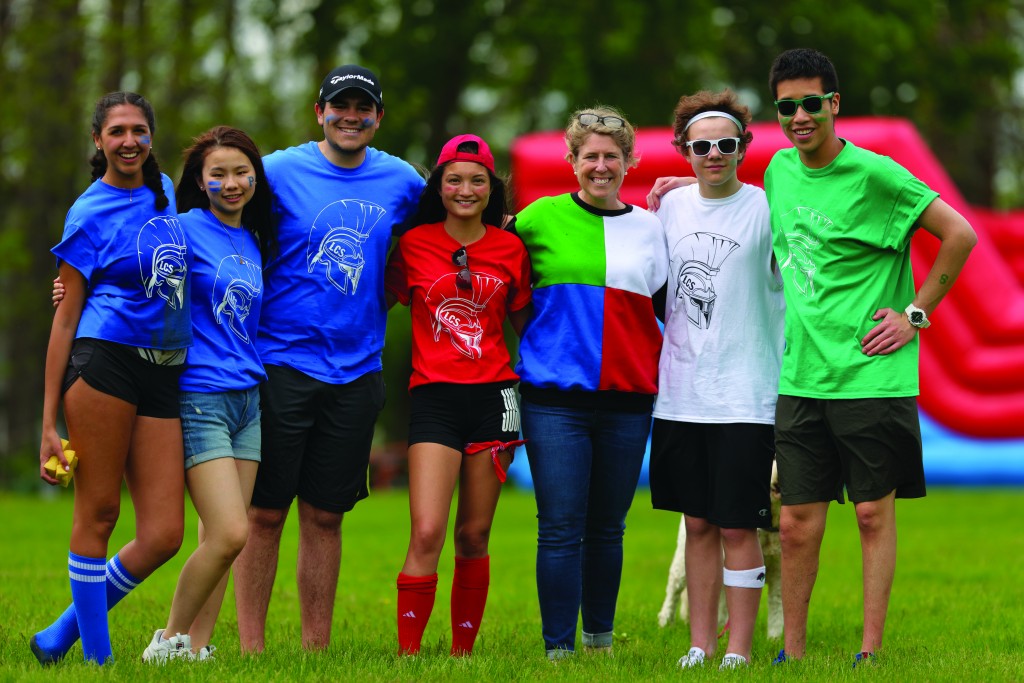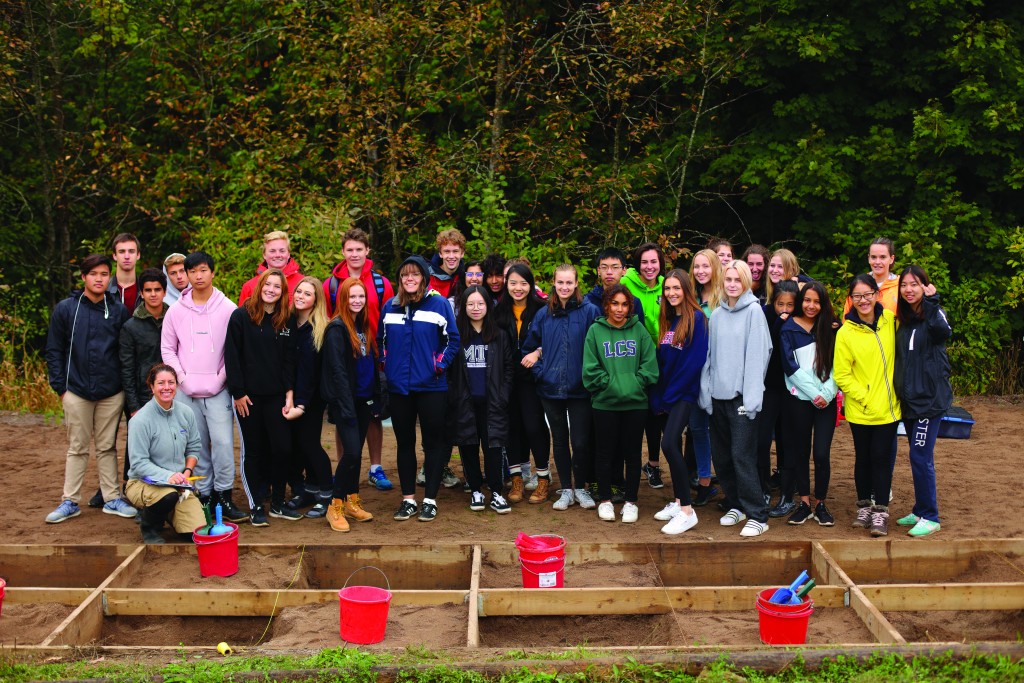By Anne-Marie Kee, Head of School and Foundation, Lakefield College School

The scourge of anxiety, depression and loneliness among teenagers today is all the talk among educators. And it should be, because we see it every day in the students we are charged with preparing for their next stages
in life.
It’s put down to all sorts of causes. Parental pressure to get high grades, build a resume and get a job. Speculation that the jobs of tomorrow don’t exist today. Stories of unemployed graduates with useless degrees. Social media pressure to present a perfect picture of happiness, beauty, sexuality, prosperity, fashion awareness or whatever other winds fill the sails of popularity. Then there’s the pervasiveness of electronic devices, which can connect people—or make all connection remote and two-dimensional. And of course, the lack of time to “just be kids.” That’s only a taste. The list is long.
All take their toll, it’s true. I see it, and it worries me as much as anyone. As the head of an independent school to 380 students from over 45 countries, I can tell you that we see all the same threats to happy, well-balanced teens. We think we have an inside track in the fight against it, but we engage in the battle just as every other school does, private or public, day or boarding.
What can we do about it?
There cannot be one answer. The list I’ve just rhymed off tells you that the battle has to be fought on many fronts. But perhaps there’s a theme that should tie all these efforts together.

One thing that works well at LCS is a ‘culture of community.’ That is, a place where people care about one another, form lifelong friendships and feel a bond of trust. A place where everyone knows one another in a genuine, deeply connected way.
Secondary school marks a unique time of life—as everyone knows who has gone through it. It’s a time when relationships become more than just kids “playing” together. Socially, academically, physically and in responsibilities and expectations, everything gets more intense and complicated. But it can also be a time of building confidence, pride in accomplishment, exuberance and, yes, fun.
At Lakefield we have a long tradition of an emphasis on character-building and strong, personal relationships between students, teachers, staff and alumni. As a school with 280 boarders, many of our students actually live together in the same houses. Teachers, staff and their families also live in quarters within the houses. Our students, boarding and day, all know each other—and together they study, play sports, attend advisor sessions, go to morning Chapel, compete in our quirky spirit house competitions, sing, go on canoeing and camping expeditions and, generally, grow as close as a family.
That’s our community. And to reinforce its stitching, we dedicate significant resources, time and programming to physical well-being, positive psychology, outdoor education and building the habits of good character that last a lifetime—all the tools of resilience.

Yes, kids sometimes get down on themselves or others, feel overwhelmed or lonely, or make poor decisions. But as a community, we’ve seen it before. We know the signs and we know how to step in. We do it not to blindly enforce rules or to act as the cop; we do it because we care.
Everyone is a part of the community, and that’s how a community works. Our teachers and staff are doing a great job of contributing to this supportive culture. I say this not to brag but to share what I have seen work to help kids handle and adapt to stress. I applaud and encourage community-builders everywhere.
The idea of a culture of community—in schools and throughout society—has recently been gaining momentum. The Canadian-born New York Times columnist and political and cultural commentator David Brooks has undertaken an initiative called Weave: The Social Fabric Project under the auspices of the Aspen Institute, a think tank based in Washington, DC.
Weave deliberately addresses isolation, loneliness and societal divisions by advocating a “community movement.” Highlighting the works of community activists at the neighbourhood level around the United States, Brooks believes a “community movement” is imminent, bringing about the next social transformation in the same tradition as the civil rights movement, feminism or environmentalism. Brooks’ new book, The Second Mountain, is worth a read.
At the high school level, we can certainly see how strong this movement can be, and how it can have wide application. Recently, our school received one of the largest donations ever to an independent school in Canada from Jane and John Hepburn who graduated in 1968 (p.28). What would motivate John to make a multimillion-dollar contribution to the high school that he left 51 years ago?
The answer is that he felt a commitment to our community and what it does for teenagers, both in education and developing resilient personalities. He believes strongly in the value of personal connections, mentoring among teachers and students in an environment of global and socio-economic diversity, and the character-building productivity of time simply spent together, whether in play or on tasks. He always admired the way in which our school’s routines get people talking, working, studying, debating, living and eating together—creating our community.

So, while some of the funds will go toward a new dining hall, for example, it’s about more than a new building. It’s about what happens within the building: all the connections that create a community. It’s also about the diversity of people that “get connected” in a community. John Hepburn ’68—and many others as well—has for decades funded financial assistance to make sure students who could not otherwise afford to attend Lakefield can do so. Why? Because communities benefit from multiple points of view and backgrounds. A third of our students now receive tuition assistance, and they make the experience of living and going to school together all that much richer, and the connections that much stronger.
Can all schools create communities? I believe they can. It’s about creating opportunities to care for and learn from each other, not just in class but also in “down” time, perhaps without phones, that includes talk, play and eating meals together in a communal, face-to-face way.
Creating a culture of community is a priority for us at Lakefield, as are the many other pieces that contribute to the fight against anxiety, depression and alienation among teenagers. For example, the need to put aside time for outdoor activity to counter the “nature deficit” in kids’ lives; the cellphone conundrum; the need to put career fears in perspective.
But in the context of our community at LCS—where face time, shared activity and the attention of concerned adults with experience in navigating the challenges of growing up is present—we can win this battle. A community movement may well be our best weapon.
